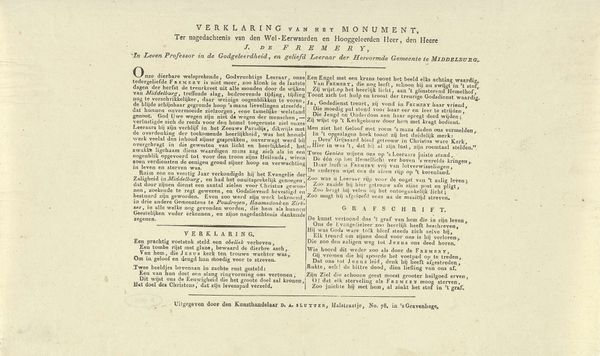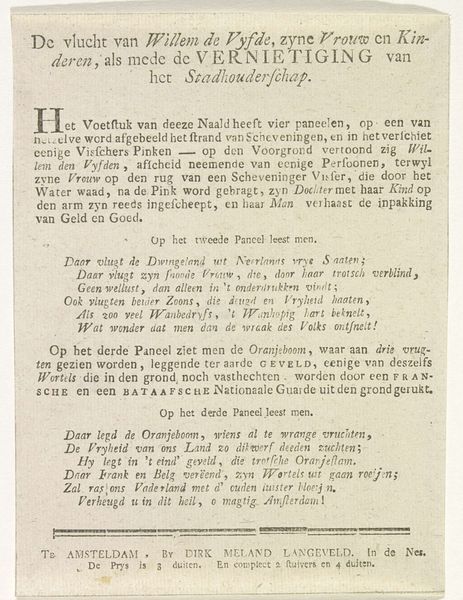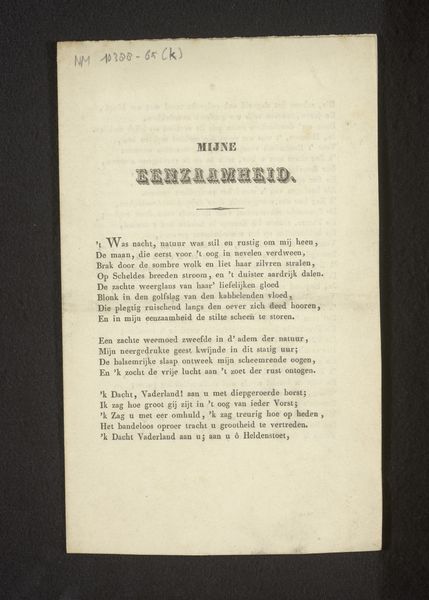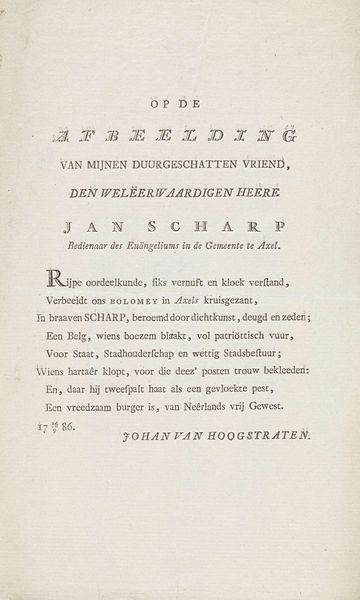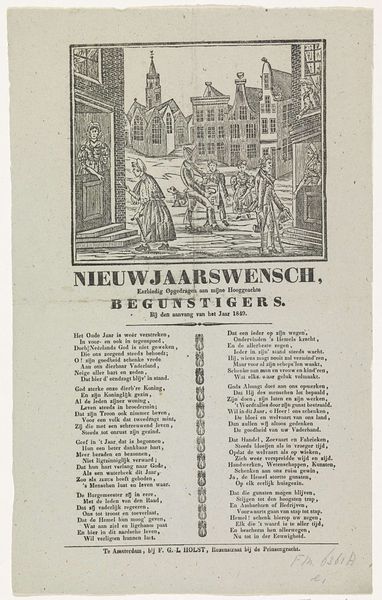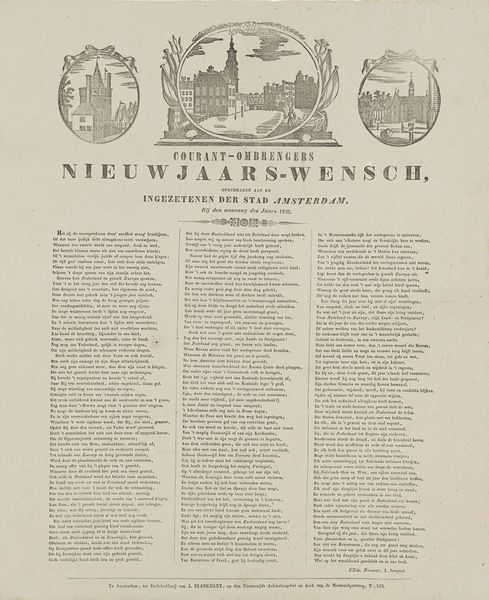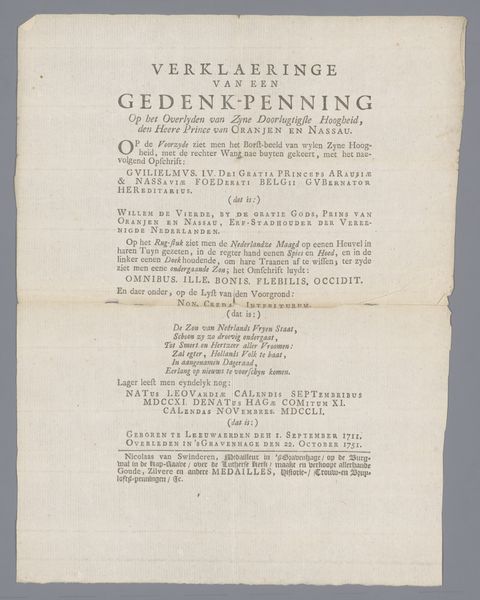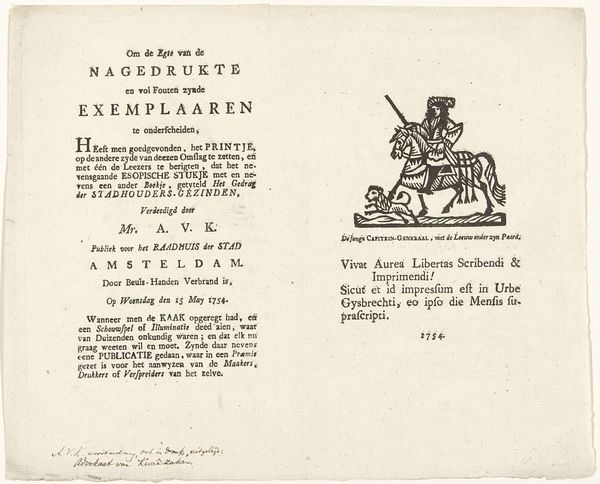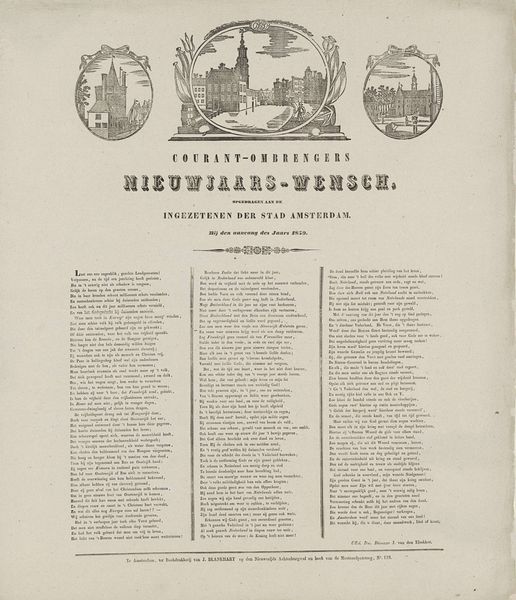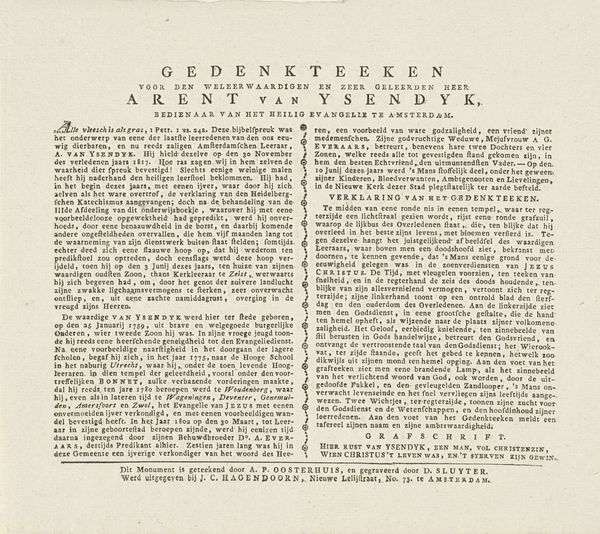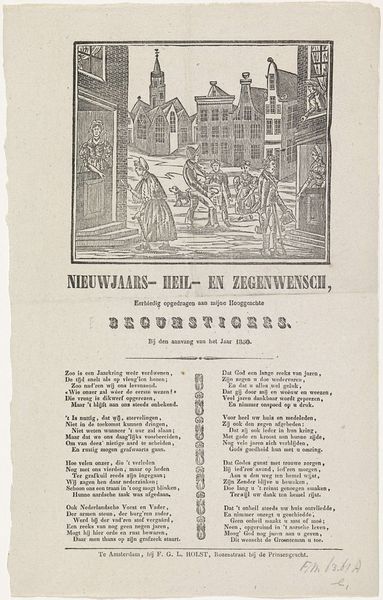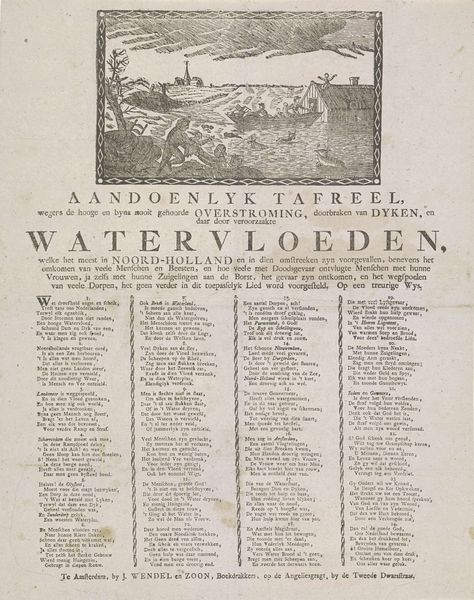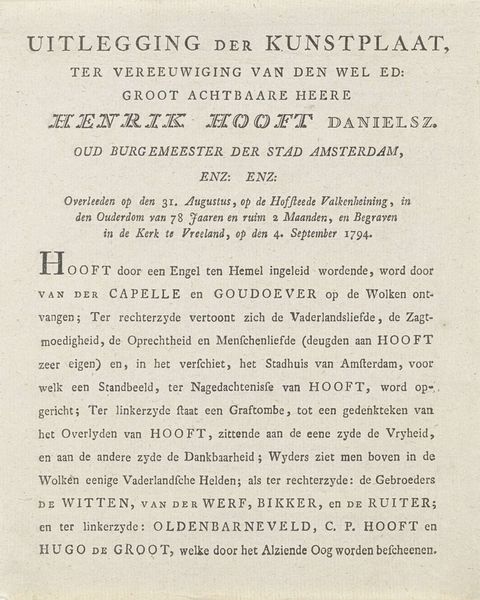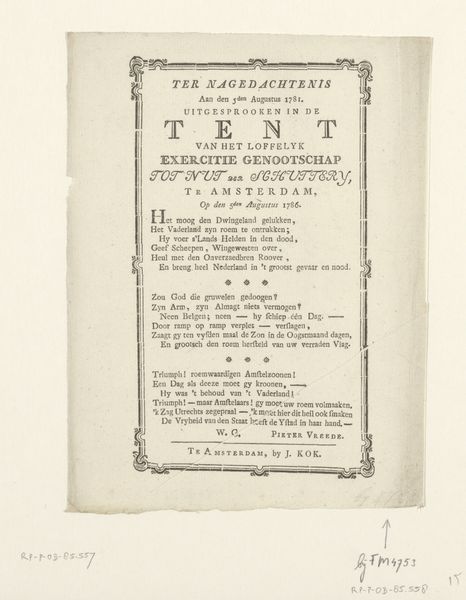
Nieuwjaarswens van de nachtwacht van Haarlem voor het jaar 1854 1853 - 1854
0:00
0:00
graphic-art, print, textile, poster, engraving
#
graphic-art
# print
#
textile
#
genre-painting
#
poster
#
engraving
Dimensions: height 325 mm, width 193 mm
Copyright: Rijks Museum: Open Domain
Editor: This print, "Nieuwjaarswens van de nachtwacht van Haarlem voor het jaar 1854," dating from 1853-1854, strikes me as a fascinating blend of civic duty and New Year's festivity. The two figures at the top seem almost caught between performing their watch and celebrating. What do you see in this piece? Curator: This print encapsulates the social fabric of Haarlem during that era. The night watch weren’t just guards, they were members of the Burgerij—the citizenry. New Year’s greetings functioned as political rituals. Think about it, a commissioned poem, etched in ink, made reproducible: How do we reconcile this collective civic expression with its ties to particular power structures? What ideological undercurrents do you perceive? Editor: Well, I noticed that the poem seems to urge the people of the Netherlands to "advance with order," suggesting a fear of unrest. So perhaps this toast to "freedom" serves more to solidify existing hierarchies. Curator: Exactly! Consider the choice of medium: engraving, readily reproducible. This wasn't about individual artistic expression. It was a sanctioned message disseminated widely. It begs the question: Whose freedom are they toasting, and at whose expense? Note, also, the role of historical figures like Van der Laan and Ripperda, presented as models of leadership. What might their legacy represent within the broader narrative of Dutch identity? Editor: I see what you mean. It’s less about celebrating freedom and more about promoting civic virtue. These images serve as reminders of past authority and tradition, all interwoven within a narrative that subtly reinforces societal roles. I definitely learned a new lens today for evaluating similar artworks! Curator: Indeed, the image and text act as cultural scaffolding, both reflecting and constructing societal norms and national identity. Analyzing these dynamics unlocks deeper understandings about that historical moment, doesn't it?
Comments
No comments
Be the first to comment and join the conversation on the ultimate creative platform.
